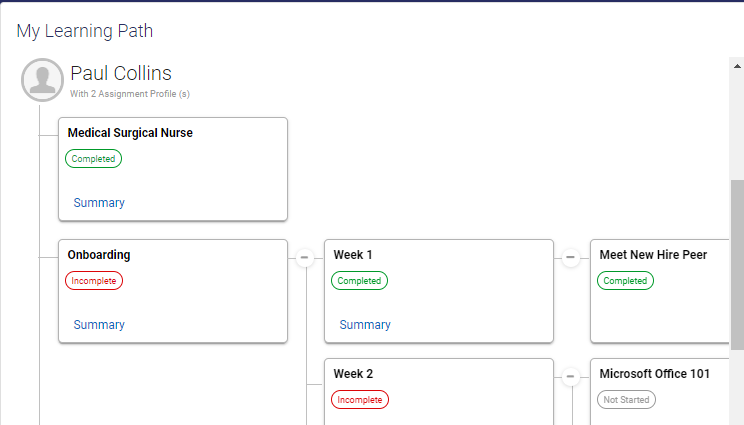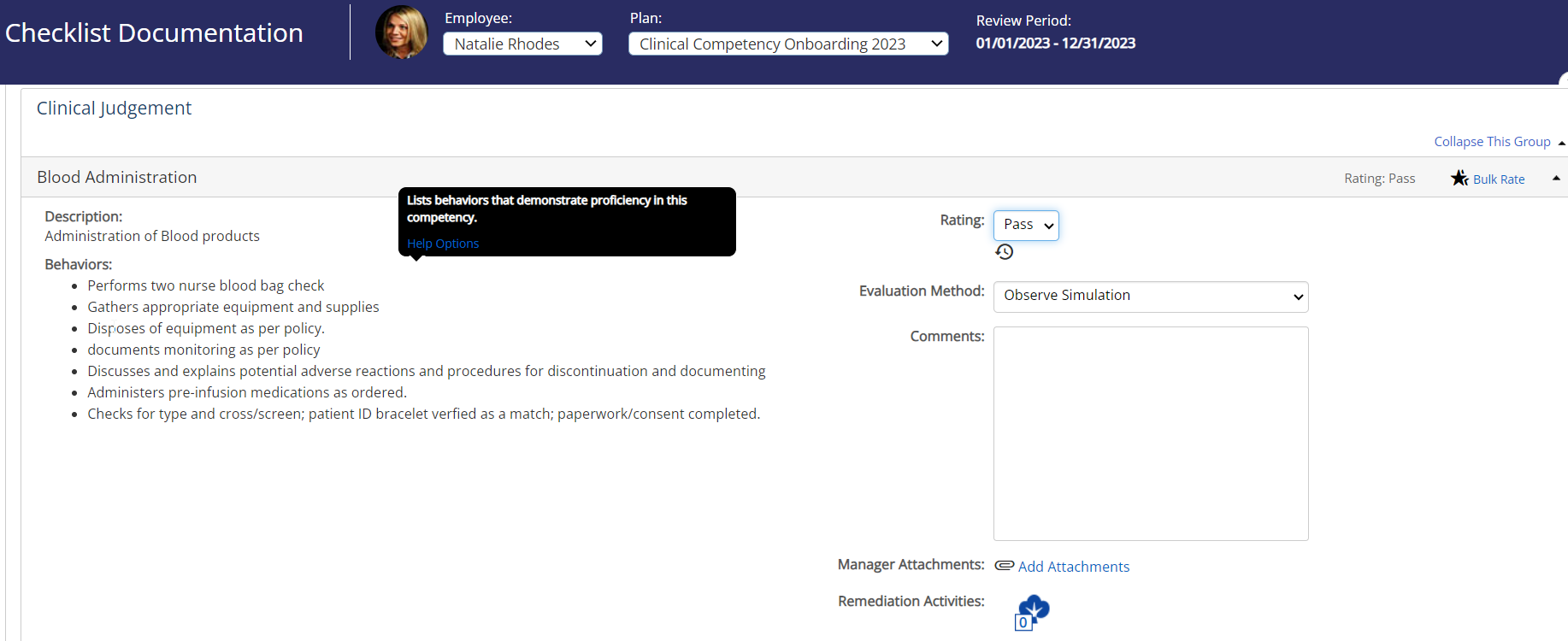Published: Nov 10, 2023Time to read: 6mins Category: Talent Management
How Performance Software Can Transform Your Employee Skills and Competency Management
Organizations in highly regulated industries must ensure their employees have the required skills to stay compliant with regulatory entities—especially when seeking or renewing accreditations. Read on to learn how skills management software makes it easy to track competencies, train staff, and keep your business moving forward.
Whether your organization operates in healthcare, aviation, energy, or another highly regulated industry, it’s essential that your employees are well-trained and up-to-date for accreditation and compliance purposes. It’s crucial that you maintain current and accurate records of each employee’s assessed competencies and skill proficiency levels. Your records need to be readily available when regulatory bodies arrive to assess your organization.
These agencies likely won’t give you much notice before they drop in for an inspection. If you’re relying on manual processes and physical paperwork to document your employees’ skills, then a surprise visit from a compliance auditor or regulatory agent could be a stressful affair. However, keeping track of so much vital data can be especially daunting for larger organizations.
Consider major healthcare systems as an example. A single nurse could be assessed on upwards of 50 different competencies or skills in order to maintain compliance with accreditation bodies like The Joint Commission. The largest healthcare systems in the United States employ tens of thousands of nurses. That’s potentially millions of skills that need to be tracked and assessed in order to maintain compliance, and that only accounts for a single role within the healthcare system. Every person working in a patient-facing position will be required to demonstrate some clinical competencies, all of which must be recorded and accessible by The Joint Commission or similar agencies.
Keeping your compliance records close at hand is critical. Fortunately, you can easily document and securely store your employee assessment data with digital skills management software.
READ MORE ON CLINICAL COMPETENCIES | ‘How Digital Skills Management Prepares Your Healthcare Organization for a Joint Commission Visit’
Secure Employee Data and Improve Your Efficiency
Switching from manual to digital skills management processes can drastically improve the efficiency of your employee performance and assessment initiatives. In addition to eliminating the need to file and organize physical documents, skills management software allows you to automate competency assessments based on specific roles in your organization. Leveraging this software feature drives consistency in your organization by ensuring that everyone in the same role is being assessed on the same required competencies.
Digital competency documents also offer added security and peace of mind for organizational leaders. Unlike paper documents, digital records are much harder to lose, and they can’t be altered without proper authorization. Secure logins make it highly unlikely that employee performance data will be manipulated, so business leaders can rest assured that their staff all have the skills documented in their files.


Going digital with your skills and competency management also gives your organization valuable visualization tools. Robust competency assessment software manages your workforce data in a central hub to help you understand where employees are in terms of their skills and proficiency levels. Leaders and managers can easily view their direct reports and quickly access each person’s talent profile, which includes information like:
- Career aspirations and professional goals
- Past performance history
- Individually assigned competencies and skills
When integrated with a learning management system, skills management software enables managers to assign learning journeys to their direct reports. These learning journeys can include mandatory compliance training and essential onboarding activities, as well as skills-building courses.
READ MORE ON PROCESS IMPROVEMENT | ‘Do Your HR Processes Align With the Depth of Your Technology?’
Configure Skills Software to Your Specifications
Since each industry’s regulatory requirements vary, it’s important to choose a digital competency management solution that can be configured to your organization’s unique needs. Your solution should offer fully configurable competency rating scales, ideally on a per-skill basis. For example, you should be able to rate your staff on a pass/fail basis for one skill and use a percentage score on a different skill.

Using software instead of physical documents also enables you to use “bulk ratings” to quickly assess many employees at once. If you complete your assessments in a group or classroom setting, this option saves your team’s time by allowing them to quickly rate many employees’ skills at the same time with your organization’s preferred rating system.
Additionally, digital systems can be configured to assign competencies to job groupings. This makes it easier for your management teams to sign off on employees’ skills. Depending on your industry, it’s likely your employees will work with multiple supervisors, educators, and preceptors who are authorized to sign off on competency assessments. With digital documentation systems, it’s easier for multiple individuals to access an employee’s checklist and sign off on assessments.
KEEP READING | ‘8 Data Visualizations Available With PeopleFluent Performance, Compensation, and Succession’
Leverage Your Employee Competency Data
With so much data available, physical documentation can get overwhelming when you’re searching for specific information. Digital solutions make it easy to run skills reports that quickly show your leadership teams what they want to know. These reports can be used for compliance documentation for regulatory agents and can be presented to accreditation bodies within minutes of a request being made.
Additionally, the software may allow you to color-code your reports to your organization’s specifications. This allows you to quickly see which of your employees are meeting skills expectations and who might need additional training or support.
These reports also come in handy when you need to fill gaps in your workforce. Going back to our healthcare example, let’s say you manage an emergency room (ER) at a hospital, and you’re short-staffed. You need three nurses to cover the gap in your workforce. A skills report can quickly identify which nurses in your healthcare system would be capable of temporarily “floating” to the ER from different departments based on their clinical competencies and proficiency levels.
GET A SKILLS CHECK-UP | ‘The 5 Most Important Skills for Healthcare Leaders’
Ensure Compliance and Stay Agile With Modern Performance Solutions
With digital reports, it’s easy to redeploy resources within your organization and be ready to prove you’re compliant when it comes time for reaccreditation. Digital skills management solutions make it easier to prepare for visits from regulatory agents, no matter what industry you’re in. Secure, digital competency documentation eliminates the need for physical storage and increases the efficiency of your skills assessment processes. Plus, it’s just easier to work with.
Whether you’re assessing skills during onboarding or need to reskill an entire department, digital competency and skill management enables you to swiftly ensure your staff is proficient in the skills your organization needs to be successful.
Discover How Skills Management Software Can Work for Your Organization
Ready to ditch the paper documents and modernize your skills assessment process? Let us help you with a secure, easy-to-access digital solution. Download the product sheet, or schedule a demo today.